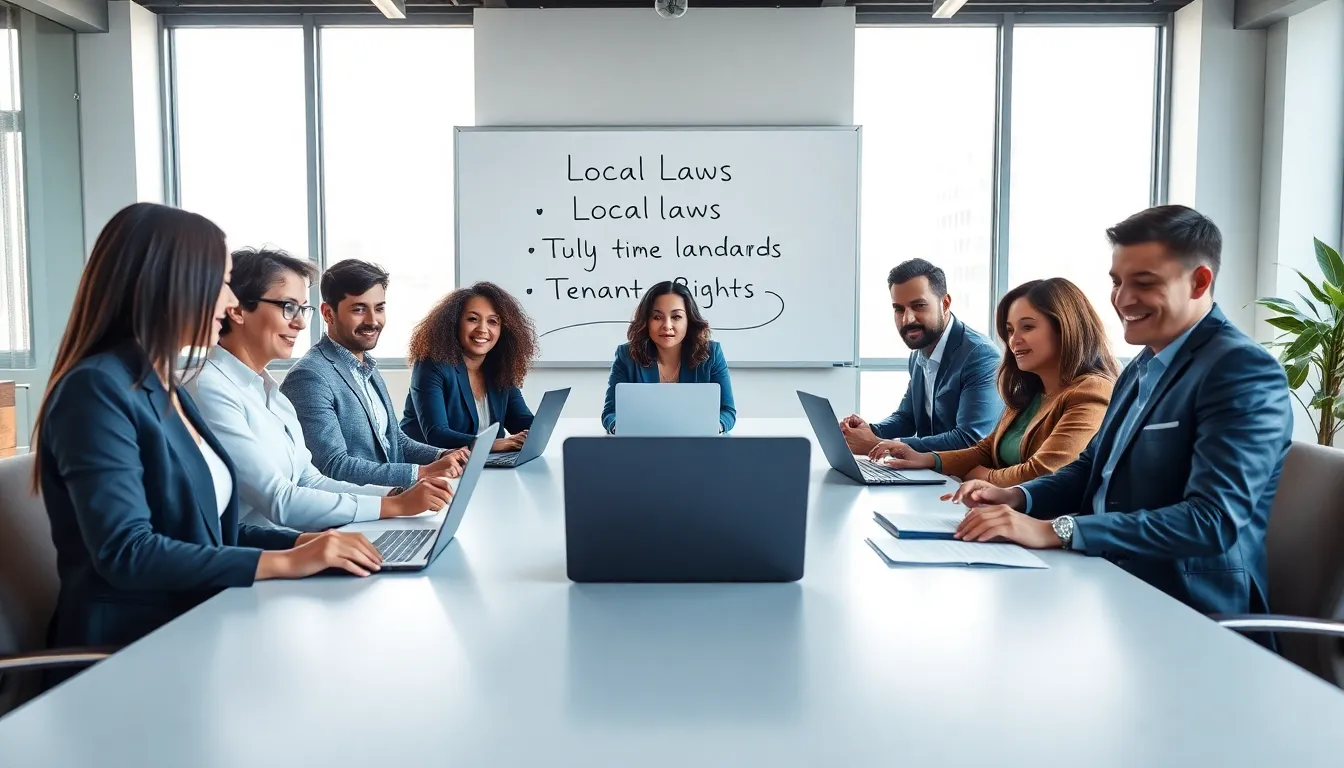Stepping into the world of landlordship for the first time can feel like diving into the deep end without knowing how to swim. But fear not. With the right tips, you can navigate these waters with confidence and maybe even have a bit of fun along the way. After all, becoming a landlord isn’t just about collecting rent: it’s about creating a thriving rental space that both you and your tenants can appreciate. So, grab your floaties and let’s get started on your journey to becoming the best landlord in town.
Table of Contents
ToggleUnderstanding Your Responsibilities

Being a landlord means wearing many hats, and the first one is understanding your responsibilities. You can’t protect your investment without knowing what you’re getting into.
Research Local Laws and Regulations
Before diving in, a little assignments goes a long way. Local laws can vary significantly from one place to another. You need to familiarize yourself with zoning laws, safety codes, and rent control regulations. Not understanding these can lead to hefty fines or legal troubles, definitely not the way you want to start your landlord career.
Tenant Rights and Fair Housing
Of course, your responsibilities also extend to your tenants. Understanding tenant rights and the Fair Housing Act is critical. This legislation ensures that you cannot discriminate based on race, religion, gender, familial status, or disability. Every tenant deserves a fair shot, and knowing the law keeps you not just compliant, but also makes you a landlord that tenants love to work with.
Creating a Solid Lease Agreement
A solid lease agreement is the backbone of any rental relationship. Without it, it’s like sailing without a map, good luck not getting lost.
Essential Elements of a Lease
When drafting your lease, ensure it includes key elements like rental amount, payment due dates, security deposit details, and the duration of the lease. Clarity here saves everyone a boatload of confusion down the line.
Renter’s Insurance and Liability
It’s also wise to require renters’ insurance. This protects both you and your tenants should something go awry. Explain to them that this small investment can shield them from potentially massive costs associated with damage or theft.
Preparing Your Property for Rent
The first impression matters more than you think, especially in real estate. Decorating and maintaining your rental isn’t an optional task: it’s essential.
Essential Repairs and Maintenance
Before your property hits the market, ensure that all essential repairs are done. A leaky faucet or broken light fixture can discourage potential tenants before they ever step foot inside. You want tenants to see your property as a place they can truly call home.
Staging and Marketing Your Rental
Don’t underestimate the power of staging. A well-staged property attracts higher quality tenants. Consider hiring a professional if it’s within your budget. Pair that with good marketing, think high-quality photos and compelling descriptions. Buzz is everything.
Finding the Right Tenants
Finding the right tenants can feel like dating. Just because someone seems nice doesn’t mean they’re the perfect match for your rental.
Screening Prospective Tenants
Diligent screening can save headaches down the road. Background checks, credit history reviews, and rental history checks can provide insight into whether someone is likely to pay rent on time and care for your property.
Conducting Interviews and Background Checks
Once you’ve narrowed it down, conduct interviews. A casual chat can reveal a lot about someone’s personality. If they’re enthusiastic about being a tenant, that’s a good sign, but trust your instincts.
Managing Your Rental Property
Now that your property is rented, it’s time for the real work to begin. Managing your property means being proactive and responsive.
Setting Rental Pricing and Payment Terms
Set the rental price based on local market rates. Overpricing can lead to vacancies, while underpricing can hurt your investment. Finding that sweet spot is key. Don’t forget to mention payment terms clearly in your lease.
Handling Maintenance Requests and Repairs
When issues arise (and they will), be prompt in your responses. An ignored leaky sink turns into an angry tenant fast. Building a good relationship with a reliable handyman or contractor can save you time and reduce stress.
Navigating Tenant Move-Out and Evictions
During a tenant’s move-out, certain protocols must be followed to ensure a smooth transition, especially if things go south.
Preparing for End of Lease Procedures
As the lease term ends, ensure you’ve communicated all move-out procedures clearly. Conduct a walkthrough with your tenant and document the property’s condition. This will help settle any security deposit disputes later.
Understanding the Eviction Process
While not a pleasant task, you should be prepared for the eviction process. Familiarize yourself with legal procedures: an unlawful eviction can lead to headaches, and lawsuits. Secure all your paperwork and know your rights as a landlord.







